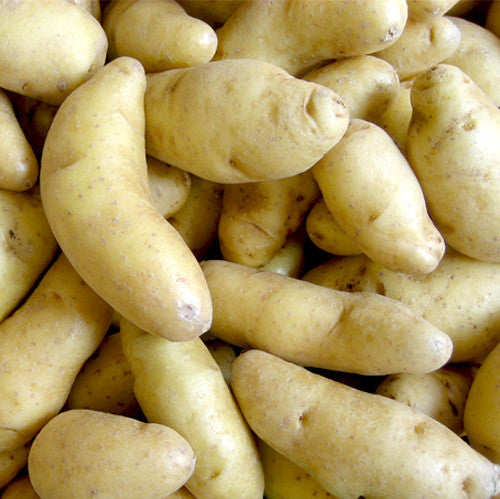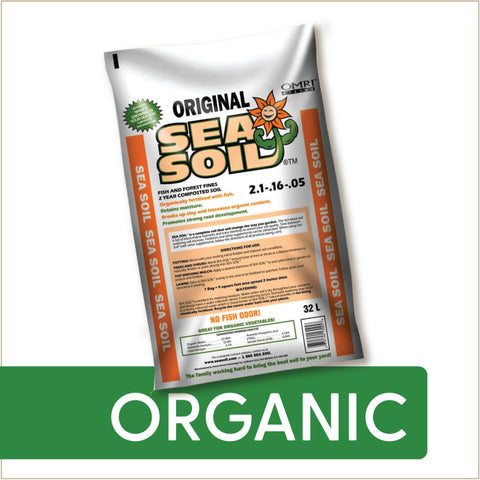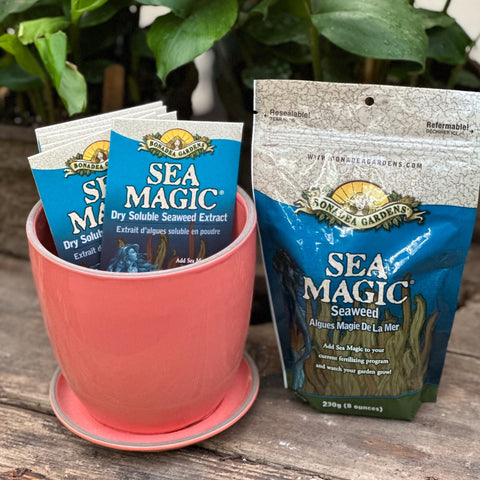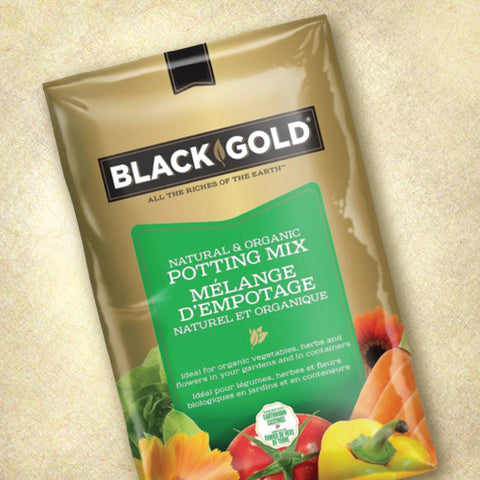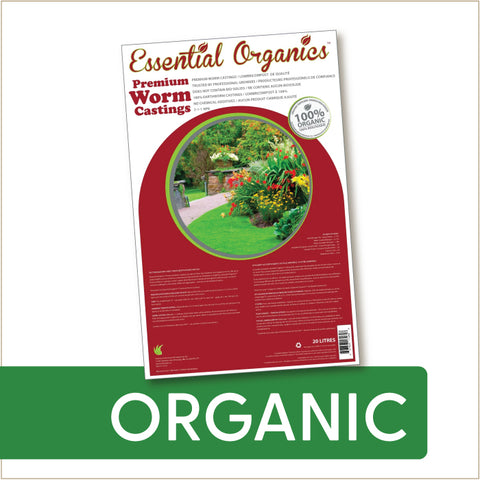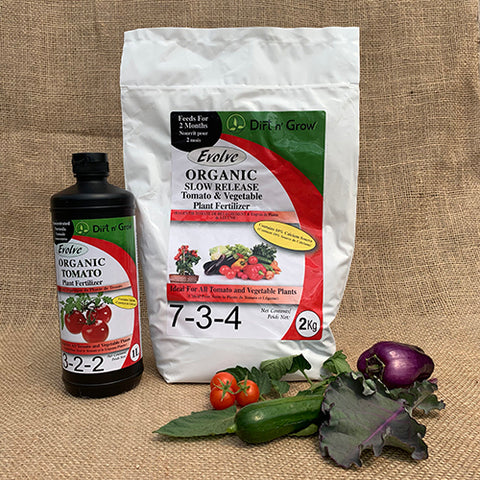Seed Potato - Banana Fingerling (Certified Organic)
$11.99
This item may be out of season or currently out of stock. Please check back.
1 kg bag certified seed potato
Description: Expect high yields of elongated tubers with a waxy texture. These potatoes hold together very well in potato salads. An heirloom from northern Europe. Popular variety!
Shipping note: due to the cost of shipping bulky items, the minimum order for seed potatoes being shipped is 3kg (can be mixed varieties; shipping orders with less than minimums will be cancelled and refunded); there is no minimum for seed potato orders being picked up at Sage Garden in spring. Seed potatoes are available for pick up/shipping in later April, with no exceptions including for customers with earlier planting out dates ~ thanks!
What is a "seed potato"? Potatoes can only be sold as "seed" if they have been grown by an approved producer and are subject to extensive inspection by the Canadian Food Inspection Agency (CFIA). Producers have a long list of protocols that must be followed during the growing and harvesting of seed potatoes in order to retain accreditation as a seed potato grower. Each crop of seed potatoes is carefully evaluated for a variety of diseases and condition, and are either approved or rejected each season. The standards required to pass inspection are very high and even experienced growers will regularly have some varieties from a given season that do not pass certification. In addition, seed potatoes are not treated with any growth inhibitors (unlike table potatoes). All potatoes sold at Sage Garden are from top Canadian growers and have passed the CFIA inspection process.
Potato planting info graphic, here
Latin Name: Solanum tuberosum
Main Uses: Culinary
Days to Maturity: 100 - 120 days
Exposure: Full sun
Planting: Seed potatoes are tubers (and not actually seeds). Each tuber can be cut down to produce multiple plants, so long as each piece has one to three eyes. Smaller tubers are often planted whole, while larger ones are divided up. If you decide to divide into multiple sections, expose the cut-up pieces to fresh air for 24 hours ahead of planting.
Seed potatoes are a cool-season crop and can be planted when the soil is 5 - 10˚C, so long as conditions will be frost-free once the tubers have sprouted above the soil line (approximately two weeks post-planting). Seed potatoes should be at the same temperature as the soil, at the time of planting, so it is recommended to set the potatoes out overnight in a brown paper bag at the planting site to allow them to adjust. Soil should be dry when you plant, to reduce the chance of rot (it is a good idea to apply a natural fungicide at the time of planting, to prevent fungal diseases; see in store for recommendations).
Plant tubers at a depth of 25 cm (10"), allowing the plant to develop a sturdy base. You can "hill' soil around the initial base as the plat develops, stating when they are 15 cm (6") tall, to encourage more tubers. Early varieties can be planted 12 - 15 cm (about 6") apart; mid season varieties at 25 - 30 cm (10 -12"); and late season at 30+ cm (12+ inches) apart.
The ideal soil for potatoes is a slightly acidic sandy loam with lots of well-rotted organic material mixed in. That said, potatoes can grow well in heavier soils and can even be planted into straw mixed with compost!
Growing in Containers: Potatoes grow very well in large, deep pots such as Root Pouches or raised beds. A minimum 15-gallon container is recommended. Productivity goes down for potatoes if the root system gets too warm - yet they grow best in a sunny location. To buffer against the soil heating up too much in containers, try mulching on top of the soil or tucking the container out of the heat while leaving the plant in a sunny, exposed position.
Fertilizing (Containers): Potatoes are heavy feeders and do best where the soil is slightly acidic (pH of 5.0 - 6.5). The lower the soil pH, the more fertilizer is required to achieve the same benefit (due to differences in up take regulated by pH). A simple soil test kit is helpful for measuring soil pH for both containers and the garden. So, the ideal fertilizer is an organic acid-plant fertilizer (may not be labelled as "potato food", but as long as it is balanced it will be well suited). Apply regularly through the season. The addition of bonemeal at the time of planting is highly recommended, as this encourages strong root development. Potatoes thrive on organic matter, so amending potting mixes with generous amounts of quality compost is very beneficial.
Watering (Containers): Regular, even watering is essential for success with potatoes in containers. Consistent soil moisture levels go a long way towards healthy potato plants, which will, in turn, produce the best crop. Avoid peaks and valleys! Potatoes require approximately 6 cm (2") of water per week.
Growing in Mixed Planters: Not well suited for mixed planters.
Fertilizing (Garden): Potatoes are heavy feeders and do best where the soil is slightly acidic (pH of 5.0 - 6.5). The lower the soil pH, the more fertilizer is required to achieve the same benefit (due to differences in up take regulated by pH). A simple soil test kit is helpful for measuring soil pH for both containers and the garden. So, the ideal fertilizer is an organic acid-plant fertilizer (may not be labelled as "potato food", but as long as it is balanced it will be well suited). Apply regularly through the season. The addition of bonemeal at the time of planting is highly recommended, as this encourages strong root development. Potatoes thrive on organic matter, so amending garden soil with generous amounts of quality compost is very beneficial.
Watering (Garden): Regular, even watering is essential for success with potatoes in the garden. Consistent soil moisture levels go a long ways towards healthy potato plants, which will, in turn, produce the best crop. Avoid peaks and valleys! Mulching around plants will help keep soil evenly moist (and also keeps weeds down). Potatoes require approximately 6 cm (2") of water per week.
Special Requirements for Potatoes: Potatoes do best in acidic soil, loamy soil. Ideally, in-ground plantings can be prepared a season ahead with the addition of compost, peat moss, pine needles or oaks leaves.
Potatoes should be grown in a 4-year rotation, cycling through one of four plots each year in the rotation. Container-grown plants can be potted in the same container year to year, so long as the soil is changed and the container cleaned.
Pest/Disease Issues: Colorado Potato Beetle is the major pest concern for home gardeners. Intervention with pesticides (organic or otherwise) is not a very effective strategy; the key to dealing with potato beetles is through prevention:
- Crop rotation is the first rule of thumb. A four-year cycle is ideal, with no related species (tomato, pepper, eggplant) planted in a location where potatoes will be planted.
- Containers are an effective way to reduce the occurrence of potato beetles. Choose large pots (minimum 10-gallon pot), or potato boxes made from wood framing.
- Mulch in-ground crops of potatoes with straw (weed-free). Apply a thick layer of straw mulch in potato rows. Mulching encourages habitat for beneficial insects.
- Use floating row covers, which effectively keep beetles out while allowing air and light to penetrate the crop area.
- Plant varieties that are less prone to beetle attacks, such as Russet Burbank, Yukon Gold, or Norland.
- Pick-off adult beetles, larvae, and eggs, if spotted. Drop into a bucket of soapy water, to kill the beetles, larvae or eggs. Some people vacuum their potato plants with a dust-buster, to remove and destroy beetles.
Potatoes can be harvested at a variety of stages through the growing season, with new potatoes generally ready 8 - 10 weeks after planting. For full-sized tubers, harvest soon after plants withers and die-back on top (leaving them too long after die-back may cause rot on the tubers).
Harvesting should be done carefully to ensure the best storage of the tubers. Many growers of small to medium potato patches will dig by hand to avoid bruising the potatoes, while a pitchfork or other tools may be used (carefully!) for larger crops. Harvest when conditions are dry and do not wash the dirt off, only brush gently to remove any dirt and expose and rot or disease spots (discard any diseased tubers). Potatoes should be cured for about two weeks by laying them out on cardboard or newsprint in a cool, dark and well-ventilated location; this makes the skins tougher and significantly improves storage ability.
Once potatoes are cured, they can be stored in brown paper bags at about 4˚C - for example in the fridge or cold storage room. Avoid storing potatoes in "musty" conditions. Avoid storing near apples, as the ethylene gas from ripening apples will undermine the storage life of potatoes.

